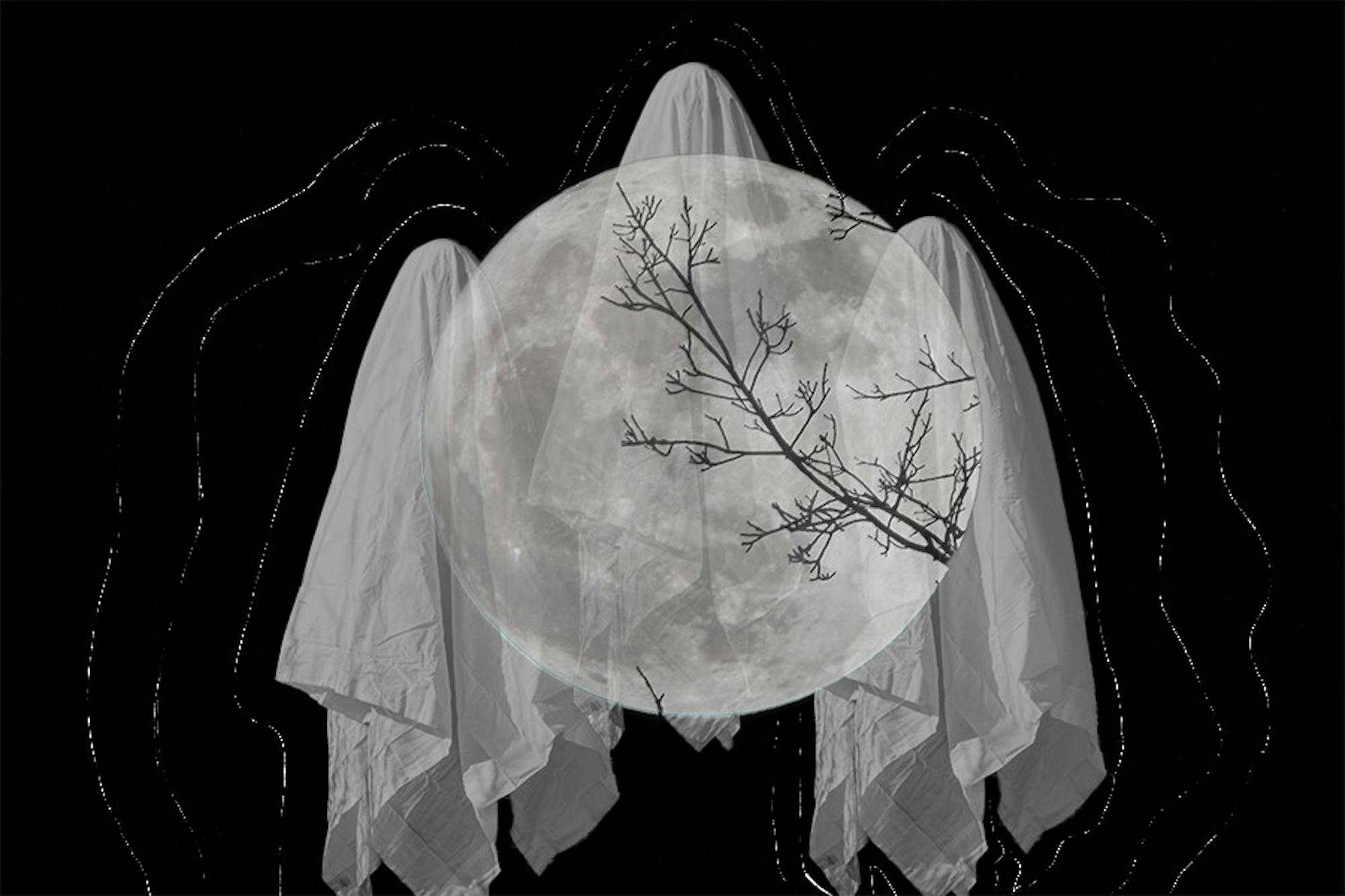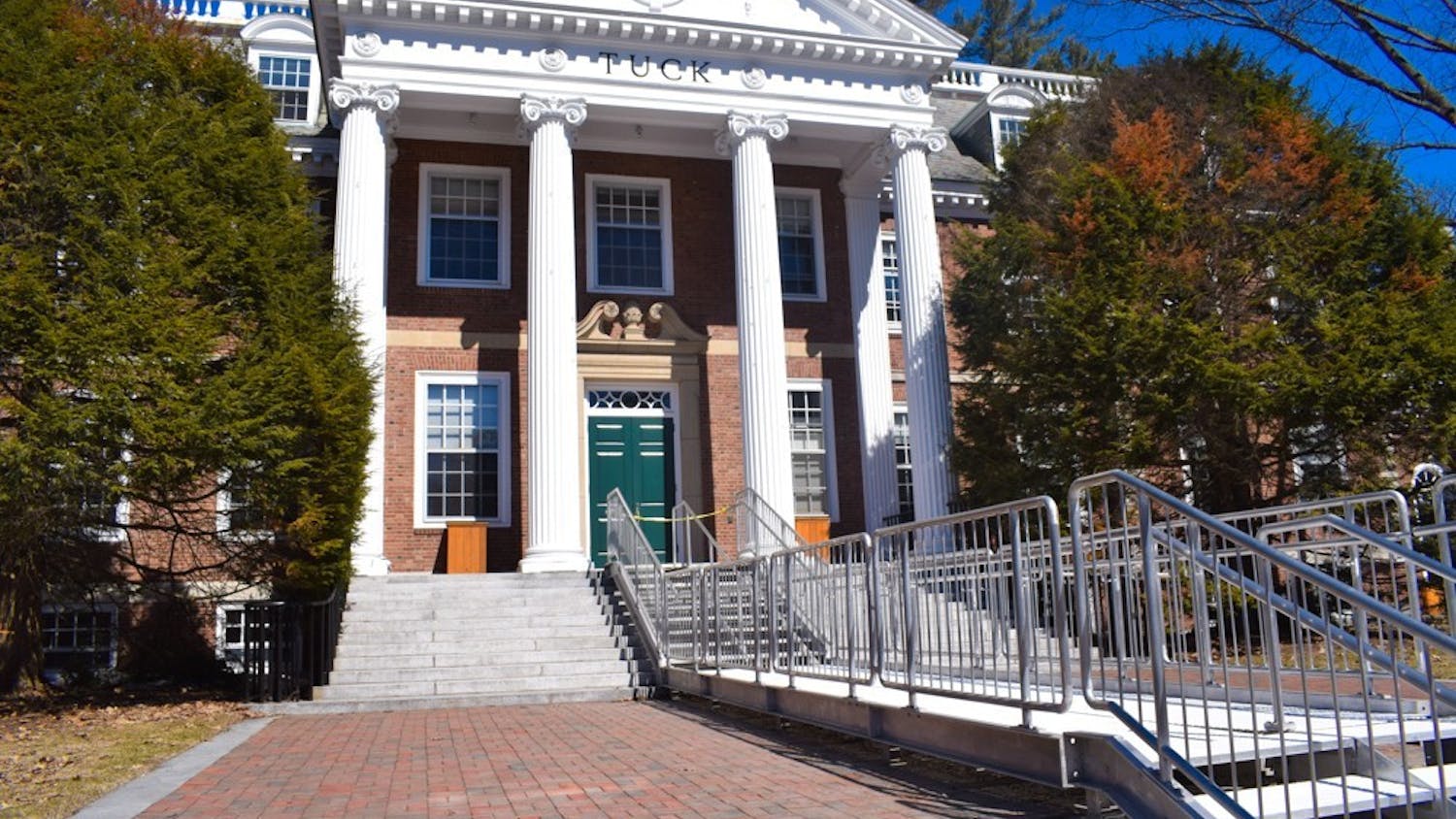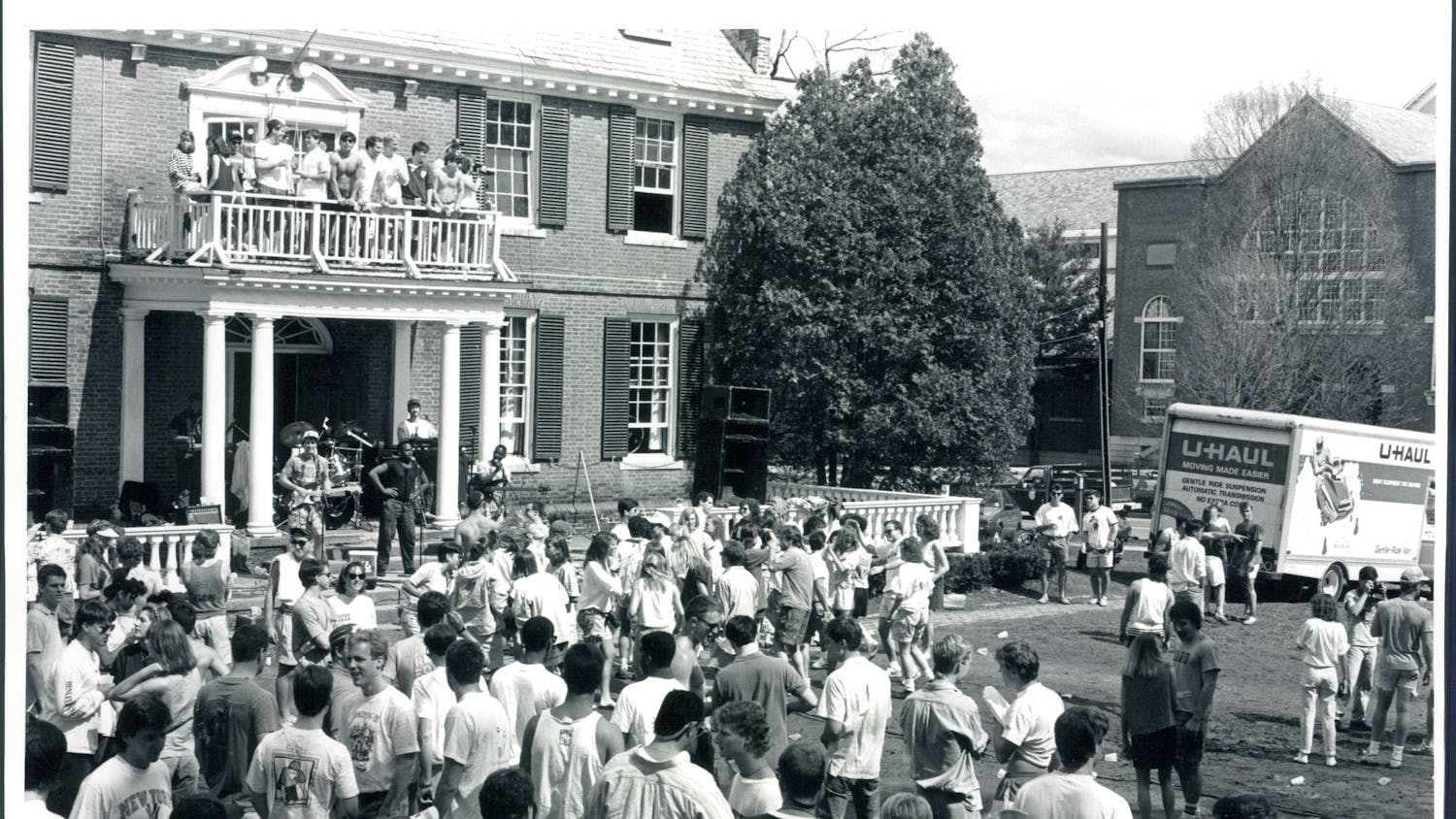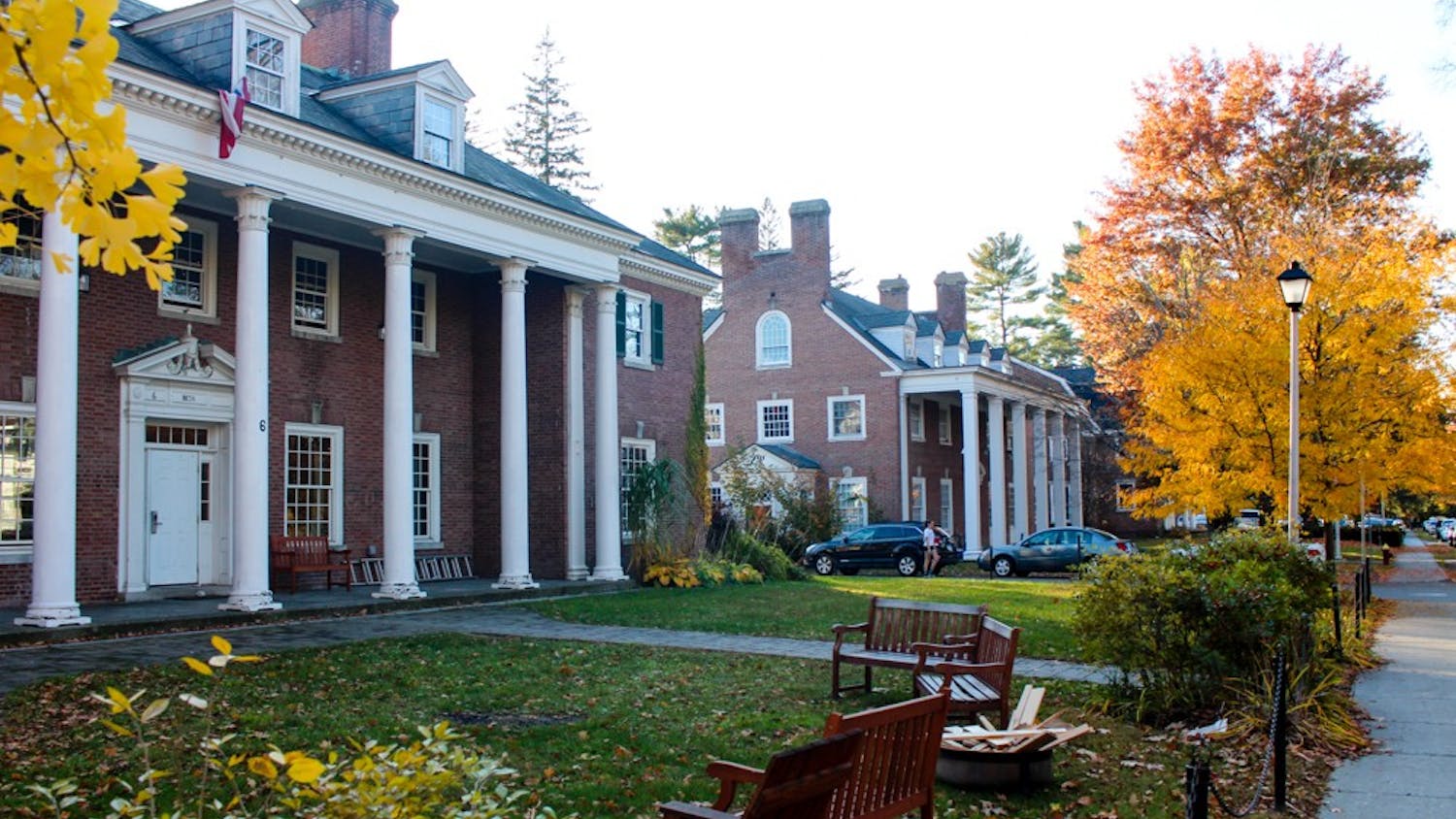Now that we are a mere five months and five days away from Halloween — not that anyone’s counting — I think it’s only appropriate that we delve into Dartmouth’s storied paranormal past. Dartmouth has a long history of mysterious deaths and spooky occurrences, which have resulted in a number of ghostly reports over the years.
In the summer of 2019, Grace Rubin ’22 investigated some of these spooky occurrences and led a ghost tour around campus. She said she believes that Hanover is a perfect breeding ground for the paranormal.
“Hanover is kind of a perfect location for ghost stories because there’s so many old buildings. That’s kind of the main thing you need: a creepy cemetery and old buildings and a prohibition-era murder,” Rubin said. “I think we’re more set up than the average college campus to have some good ghost stories.”
Rubin is referring to the murder of Dartmouth student Henry Maroney, a member of the Class of 1920 and a member of Theta Delta Chi fraternity. In the 1920s, the manufacturing, sale and distribution of alcohol was banned by the 18th amendment. As a result, many people began to sell or distribute alcohol illegally — including Robert Meads, a member of Dartmouth’s Class of 1919. Accounts of the story differ, but according to Harold Whittaker, Maroney’s roommate, the pair went to Meads’s dormitory in North Massachusetts Hall to purchase whiskey. Meads agreed to sell the pair a pint for $8, but when he left to get the bottle, Maroney tossed a partly-filled quart bottle at Whittaker, and the two jumped out the window and fled to the Theta Delta Chi house without paying. Meads fired three shots after them, but neither of the men were hit.
That night, as Maroney was in the bathroom preparing for bed, Meads entered the fraternity house and sat at Maroney’s desk. When Maroney left the bathroom, Meads fired the two shots through Maroney’s heart that gave the Boom Boom Lodge its name — two booms for the two shots fired. Maroney died almost instantly, and Meads was later charged with his murder. There have been reports of strange occurrences in the TDX house ever since. Rubin describes reports of ping pong balls flying in odd directions during games of pong in TDX, and some believe a ghost is behind this defiance of physics.
Just years later, on February 25, 1934, nine students died at the Theta Chi fraternity house (now Alpha Theta gender-inclusive Greek house). An improperly banked furnace caused gas to accumulate in the house’s furnace until it exploded, causing carbon monoxide to fill the room and killing all nine of the house’s residents. The house was demolished and rebuilt, but the basement retains some of the original structure of the Theta Chi house.
Some people have seen evidence that the spirits of the dead still haunt the basement. In 1992, one man participating in Sink Night, a ritual where members affirm their bids to their house, that often involves alcohol consumption, reported seeing seven men in old-fashioned wool suits join in on the tradition. While the man claimed to have no knowledge of the carbon monoxide accident that killed nine students, he identified the men he saw in the Alpha Theta basement in a 1934 Aegis yearbook, and the photos he identified matched the victims of the accident. Other members of Alpha Theta have reported more strange occurrences over the years. Some members have found the contents of the refrigerator mysteriously spread on the stairs leading out of the basement, along with other basement ghost sightings.
The Panarchy undergraduate society’s house is another site of ghostly intrigue. According to the legend, a doctor and his daughter, Emily, used to live in what is now the Panarchy house. Emily was schizophrenic, and the doctor used to hide her away in the attic of the house. Eventually, Emily died by suicide in the cupola, and her body was buried in the Dartmouth Cemetery. Through the years, there have been many reports of haunted activity in the house. A 2012 article in The Dartmouth described residents of the house reporting waking up to drawers violently shaking, experiencing eerie lucid dreams and feeling a strong “presence” in the attic.
Present-day residents of Panarchy have corroborated some of these mysterious encounters. Moonoka Begay ’23 currently lives in the Panarchy attic, and a week into moving into the space, she said she began to have “scary experiences.”
“It started with me being woken up at 5 a.m. for nights on end to literal planks in the wall falling out of the wall,” Begay said. “[...] There's a corner of the room by the door where I would literally be woken up to these planks just slamming out. They would just be flying out of the wall and then leaving you with this gaping hole into the insulation and wiring.”
After being woken up in the middle of the night for multiple days in a row, Begay called her mother and told her about the phenomenon. As she was explaining the situation, Begay said the string lights in the same corner of the room began to flash different colors. From that point on, Begay noticed the lights would flash three or four times per day, always exactly on the hour, despite attempts to fix the problem.
“I went through all the explanations possible,” Begay said. “I reset the breaker. I plugged it into different outlets. I reset the whole light system, and nothing made a difference.”
Begay also reported feeling like she was constantly being “watched.” At first, Begay said her housemates were skeptical of the haunted affairs occurring in her room, but as her friends began to spend more time in her room, they too became convinced that Begay’s stories were real. One of Begay’s housemates, Connor Hutto ‘22, lives in the room directly below the cupola, and he has also reported the feeling of someone watching him, along with other mysterious activities.
“He’s said that occasionally he’s left things out in his room, and just like that he turns around and they’re gone,” Begay said. “On a certain occasion he was trying to fix something and he put these nails down and they just disappeared.”
Panarchy’s basement features a “tomb room,” which is usually locked because it is against fire codes for the residents to spend time there. However, one day, while Begay was in a class, some of her housemates decided to enter the tomb room. The group took the door off its hinges and walked in. Although she didn’t know what was happening at the time, Begay said she started feeling her ears popping and felt afraid.
“I felt like it was being opened, like I was going underground,” Begay said.
Although living in Panarchy is sometimes scary, Begay said that her housemates embrace the haunted elements of their house.
“I would say that the people who live here enjoy that there’s an endearing charm to the fact that it's so old and has all these funny little parts,” Begay said. “And I would say that the sort of haunted and spooky aspect kind of just adds to that, and people love the history in general and are for the most part pretty fascinated by it.”
Arielle Feuerstein ’24 is an English major from Bethesda, Maryland. She currently serves as the production executive editor, and in the past, she wrote and edited for Mirror. In addition to writing, Arielle enjoys crocheting, board games and walks around Occom Pond.




